Intel Core i9-10850K Review: The Real Intel Flagship
by Dr. Ian Cutress on January 4, 2021 9:00 AM EST- Posted in
- CPUs
- Intel
- Core
- Z490
- 10th Gen Core
- Comet Lake
- LGA1200
- i9-10850K
CPU Tests: Encoding
One of the interesting elements on modern processors is encoding performance. This covers two main areas: encryption/decryption for secure data transfer, and video transcoding from one video format to another.
In the encrypt/decrypt scenario, how data is transferred and by what mechanism is pertinent to on-the-fly encryption of sensitive data - a process by which more modern devices are leaning to for software security.
Video transcoding as a tool to adjust the quality, file size and resolution of a video file has boomed in recent years, such as providing the optimum video for devices before consumption, or for game streamers who are wanting to upload the output from their video camera in real-time. As we move into live 3D video, this task will only get more strenuous, and it turns out that the performance of certain algorithms is a function of the input/output of the content.
HandBrake 1.32: Link
Video transcoding (both encode and decode) is a hot topic in performance metrics as more and more content is being created. First consideration is the standard in which the video is encoded, which can be lossless or lossy, trade performance for file-size, trade quality for file-size, or all of the above can increase encoding rates to help accelerate decoding rates. Alongside Google's favorite codecs, VP9 and AV1, there are others that are prominent: H264, the older codec, is practically everywhere and is designed to be optimized for 1080p video, and HEVC (or H.265) that is aimed to provide the same quality as H264 but at a lower file-size (or better quality for the same size). HEVC is important as 4K is streamed over the air, meaning less bits need to be transferred for the same quality content. There are other codecs coming to market designed for specific use cases all the time.
Handbrake is a favored tool for transcoding, with the later versions using copious amounts of newer APIs to take advantage of co-processors, like GPUs. It is available on Windows via an interface or can be accessed through the command-line, with the latter making our testing easier, with a redirection operator for the console output.
We take the compiled version of this 16-minute YouTube video about Russian CPUs at 1080p30 h264 and convert into three different files: (1) 480p30 ‘Discord’, (2) 720p30 ‘YouTube’, and (3) 4K60 HEVC.
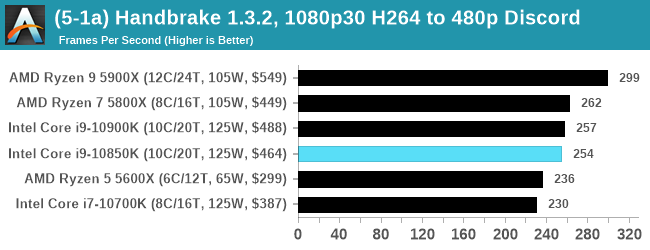
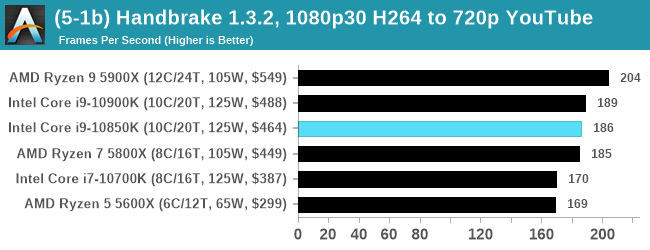
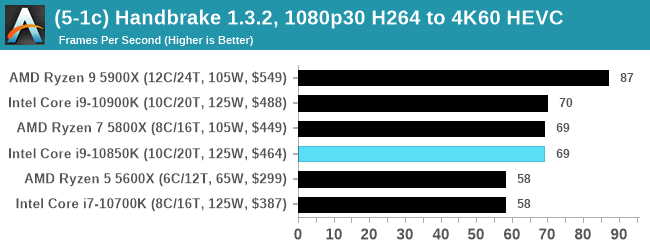
7-Zip 1900: Link
The first compression benchmark tool we use is the open-source 7-zip, which typically offers good scaling across multiple cores. 7-zip is the compression tool most cited by readers as one they would rather see benchmarks on, and the program includes a built-in benchmark tool for both compression and decompression.
The tool can either be run from inside the software or through the command line. We take the latter route as it is easier to automate, obtain results, and put through our process. The command line flags available offer an option for repeated runs, and the output provides the average automatically through the console. We direct this output into a text file and regex the required values for compression, decompression, and a combined score.
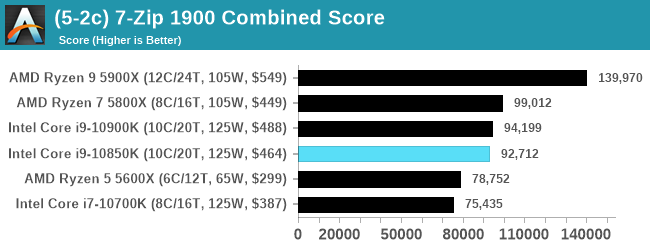
AES Encoding
Algorithms using AES coding have spread far and wide as a ubiquitous tool for encryption. Again, this is another CPU limited test, and modern CPUs have special AES pathways to accelerate their performance. We often see scaling in both frequency and cores with this benchmark. We use the latest version of TrueCrypt and run its benchmark mode over 1GB of in-DRAM data. Results shown are the GB/s average of encryption and decryption.
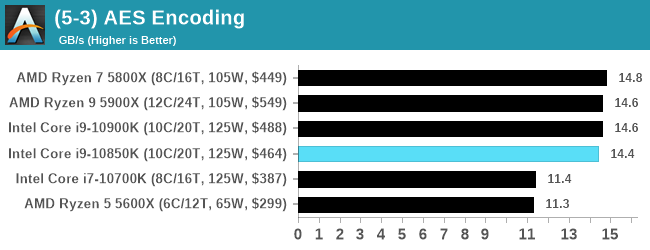
WinRAR 5.90: Link
For the 2020 test suite, we move to the latest version of WinRAR in our compression test. WinRAR in some quarters is more user friendly that 7-Zip, hence its inclusion. Rather than use a benchmark mode as we did with 7-Zip, here we take a set of files representative of a generic stack
- 33 video files , each 30 seconds, in 1.37 GB,
- 2834 smaller website files in 370 folders in 150 MB,
- 100 Beat Saber music tracks and input files, for 451 MB
This is a mixture of compressible and incompressible formats. The results shown are the time taken to encode the file. Due to DRAM caching, we run the test for 20 minutes times and take the average of the last five runs when the benchmark is in a steady state.
For automation, we use AHK’s internal timing tools from initiating the workload until the window closes signifying the end. This means the results are contained within AHK, with an average of the last 5 results being easy enough to calculate.
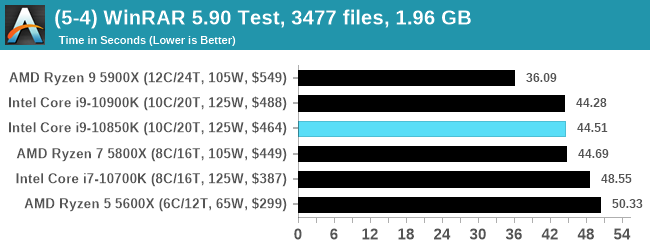


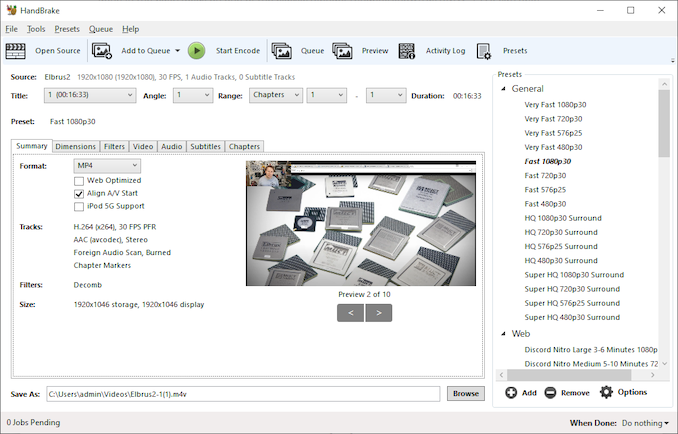
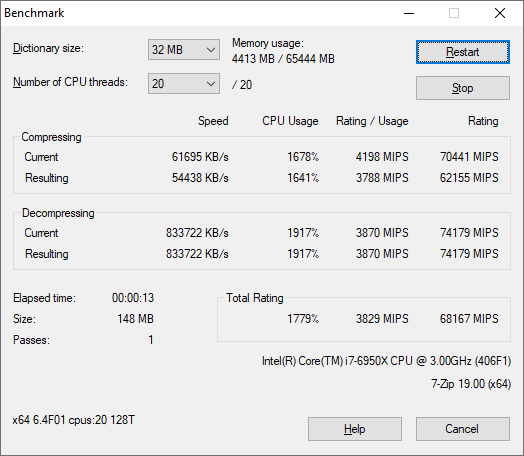









126 Comments
View All Comments
edzieba - Monday, January 4, 2021 - link
I dunno, sounds like an opportunity for ambient-pressure water phase-change cooling to me! Who needs evacuated heat-pipes or vapour-chambers when you can just spray the top of the IHS directly!shabby - Monday, January 4, 2021 - link
Hey Ian can you put the real cpu wattage in the charts that the cpu used in that test rather than the fake one? We all know this cpu never uses 125 watts.Drkrieger01 - Monday, January 4, 2021 - link
You either skipped the 'Power Consumption' page, or don't understand CPU TDP ratings. The '125W' rating is the 'non-turbo' rating, meaning power consumed at max non-turbo clock rate. AMD does the same thing, and also has a higher power consumption during turbo (although not anywhere near as much as Intel does).shabby - Monday, January 4, 2021 - link
Since each benchmark varies it would be nice seeing how much wattage each cpu used during that benchmark.Yes i know amd uses more power during turbo, the 5950x uses 30 watts more than advertised... compared to ~140 watts more that intel advertises their 10850k to use. That quite the difference don't you think?
Drkrieger01 - Monday, January 4, 2021 - link
Unless you're working on a power budget, I honestly wouldn't worry about it. Most review websites don't have the time/man-power to trace the power usage on each benchmark for each CPU. You will also have a variance between processors of the exact same model due to binning/silicon lottery. You're better off planning to use/dissipate the full turbo power of the CPU than hope for lower power. Or just buy an AMD (if you can find one!)eek2121 - Monday, January 4, 2021 - link
Actually AMD chips use the TDP value as the maximum power value minus the IO power, so all AMD chips use a total of 143 watts at maximim.Flunk - Monday, January 4, 2021 - link
Intel seems to have six similar i9 SKUs with prices ranging from $453 to $488. Seems rather pointless. Maybe Intel marketing should spend some time thinking about whether or not their insanely complex model scheme is contributing to their lack of sales. AMD has ONE SKU that competes with all of those Intel SKUs. Clock down for lower TDP doesn't need to be an entire SKU.Duwelon - Monday, January 4, 2021 - link
Whoever comes up with Intel's SKUs must be the same person/people responsible for interfacing with USB Implementers Forum on Intel's behalf. The industry is replete with remarkably confusing naming schemes, seemingly on purpose.DanNeely - Monday, January 4, 2021 - link
Making the low power versions use the same model number would be a very anti-consumer move because you'd have no easy way to know if you were getting the 3.7Ghz or 1.9Ghz model. We already have that problem on mobile where two laptops with identical specs perform wildly different because one is running the CPU at 2x the power/performance of the other. Using separate model numbers also lets you bin chips that perform best at low and high power levels separately.The production limit bins (10850K and both IGPless KF models) muddle things up a bit; but Intel's desktop lines are very cleanly broken out vs what they did a decade+ ago with a mess of different similar chips with varying cache sizes and clock speeds but the same core counts; or the ongoing mess of their mobile line (good luck figuring anything out about one of those chips from its model number without looking it up).
Crazyeyeskillah - Monday, January 4, 2021 - link
they have various skus for oem's, system builders, general public, retail products, ect ectCertain OEMs require a non-open market skus to promote their products or run at certain specs that differentiate them from what's available on the open market.